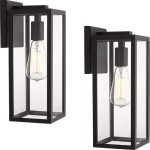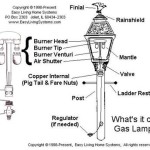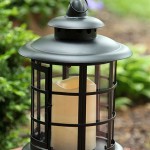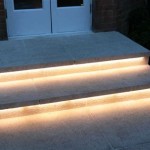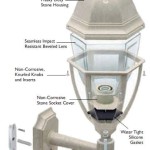How to Prevent Mold on Outdoor Fabric
Outdoor furniture and fabrics significantly enhance the comfort and aesthetics of patios, decks, and other exterior living spaces. However, prolonged exposure to environmental elements like moisture, humidity, and organic debris creates an ideal breeding ground for mold and mildew. Addressing mold prevention on outdoor fabrics is essential to maintain their appearance, extend their lifespan, and protect the health of individuals using these spaces. This article will explore effective strategies for preventing mold growth on outdoor fabrics, ensuring a clean and enjoyable outdoor environment.
Understanding the Conditions that Promote Mold Growth
Mold thrives in environments characterized by moisture, warmth, and a food source. Outdoor fabrics, especially those made from natural fibers or those with embedded organic matter, provide these necessary conditions. Understanding these factors is crucial in implementing effective prevention strategies.
Moisture: Water is essential for mold growth. Outdoor fabrics are perpetually exposed to rain, dew, and humidity. Inadequate drying after precipitation or prolonged dampness from shaded areas allows mold spores to germinate and flourish.
Warmth: Mold grows optimally within a temperature range of 60°F to 80°F (15°C to 27°C). Outdoor environments, particularly during warmer months, consistently provide temperatures conducive to mold proliferation. Direct sunlight can exacerbate moisture issues by creating a warm, humid microclimate within the fabric fibers.
Food Source: Mold feeds on organic matter. Outdoor fabrics accumulate dirt, pollen, fallen leaves, bird droppings, and other debris. These materials provide a readily available food source for mold spores, enabling them to colonize and spread across the fabric surface.
Furthermore, certain types of outdoor fabrics are more susceptible to mold growth than others. Natural fibers like cotton and linen are highly absorbent and provide ample nutrients for mold. Synthetic fabrics, such as acrylic and polyester, are generally more resistant but can still support mold growth if dirt and organic matter are present.
Proactive Cleaning and Maintenance Strategies
Regular cleaning and maintenance are paramount in preventing mold on outdoor fabrics. These practices remove moisture, eliminate food sources, and inhibit mold spore germination.
Regular Cleaning Schedule: A consistent cleaning schedule is crucial. Outdoor fabrics on furniture like cushions, umbrellas, and rugs should be cleaned at least once a month or more frequently depending on the local climate and usage. Increased frequency is necessary during periods of heavy rain or high humidity.
Removing Debris: Regularly remove leaves, twigs, dirt, and other debris from outdoor fabrics. Use a brush or a vacuum cleaner with a brush attachment to remove loose particles. Addressing debris promptly prevents it from becoming embedded in the fabric and providing a food source for mold.
Washing or Spot Cleaning: Depending on the fabric type and the extent of soiling, either machine washing or spot cleaning is necessary. For machine-washable fabrics, follow the manufacturer's instructions carefully. Use a mild detergent and avoid harsh chemicals that can damage the fabric or leave behind residues that attract mold. For spot cleaning, mix a mild detergent with water and gently scrub the affected area with a soft cloth or sponge. Rinse thoroughly with clean water and ensure the fabric is completely dry.
Proper Drying Techniques: Thorough drying is essential after cleaning. Do not store or cover damp fabrics. Whenever possible, air-dry outdoor fabrics in direct sunlight, as sunlight has natural disinfecting properties. If air drying is not feasible, use a low-heat setting on a dryer, if the fabric is dryer-safe according to its label. Ensure the fabric is completely dry before storing it or placing it back on outdoor furniture.
Protecting Against Moisture: Minimize exposure to moisture whenever possible. During periods of heavy rain or prolonged humidity, cover outdoor furniture with waterproof covers. These covers protect the fabric from direct exposure to moisture, reducing the risk of mold growth. Ensure that the covers are breathable to prevent moisture from becoming trapped underneath, which can create a conducive environment for mold.
Selecting Mold-Resistant Materials and Treatments
Choosing the right materials and applying appropriate treatments can significantly enhance the resistance of outdoor fabrics to mold growth.
Choosing Mold-Resistant Fabrics: When purchasing outdoor furniture or replacing existing fabrics, opt for materials specifically designed to resist mold and mildew. These fabrics are often treated with antimicrobial agents that inhibit the growth of mold spores. Synthetic fabrics like acrylic, polyester, and olefin are generally more resistant to mold than natural fibers like cotton and linen. Look for fabrics that are labeled as "mildew-resistant" or "antimicrobial."
Applying Fabric Protectants: After cleaning, consider applying a fabric protectant specifically designed for outdoor use. These protectants create a barrier that repels water and stains, making it more difficult for mold spores to adhere to the fabric. Choose a protectant that is compatible with the specific type of fabric and follow the manufacturer's instructions carefully. Reapply the protectant periodically, as its effectiveness may diminish over time due to exposure to the elements.
Using Antimicrobial Sprays: Antimicrobial sprays can provide an additional layer of protection against mold. These sprays contain chemicals that kill mold spores and prevent their growth. Apply the spray evenly to the fabric surface, following the manufacturer's instructions. Be sure to test the spray on a small, inconspicuous area of the fabric first to ensure it does not cause discoloration or damage. Reapply the spray as needed, especially after cleaning or exposure to heavy rain.
Proper Storage During Off-Season: When outdoor furniture is not in use, such as during the winter months, proper storage is essential. Clean the fabrics thoroughly before storing them. Ensure all moisture is removed and the fabrics are completely dry. Store the fabrics in a clean, dry, and well-ventilated area. Avoid storing them in damp basements or garages, as these environments are prone to mold growth. Use breathable storage bags or containers to allow air circulation and prevent moisture buildup. Consider adding desiccant packets to the storage containers to absorb any residual moisture.
Enhancing Air Circulation: Promote air circulation around outdoor fabrics to reduce moisture buildup. Arrange furniture in a way that allows air to flow freely around it. Avoid placing furniture too close to walls or fences, as this can restrict airflow and create damp pockets. Trim back any overgrown plants or shrubs that may be blocking sunlight and airflow to the area. Consider using fans to improve air circulation, especially in shaded or humid areas.
Addressing Existing Mold Growth: If mold is already present on outdoor fabrics, immediate action is necessary to prevent further spread and damage. It's crucial to remember that dealing with mold can be hazardous, so protective gear like gloves and a mask is essential. First, remove as much loose mold as possible using a brush or vacuum cleaner. Then, prepare a cleaning solution of mild detergent and water or a commercial mold remover, following the product instructions. Apply the solution to the affected area and gently scrub with a soft cloth or sponge. Rinse thoroughly with clean water and allow the fabric to dry completely in direct sunlight, if possible. For severe mold infestations, professional cleaning may be necessary.
Regular Inspections: Conduct regular inspections of outdoor fabrics to identify potential problems early on. Look for signs of moisture, discoloration, or mold growth. Pay particular attention to areas that are shaded or tend to accumulate moisture. Early detection allows for prompt intervention, preventing minor issues from escalating into more serious problems.
Utilizing UV Protection: Prolonged exposure to sunlight can degrade outdoor fabrics, making them more susceptible to mold growth. UV rays can weaken the fibers and cause them to break down, creating more surface area for mold spores to attach. Use UV protectant sprays or covers to shield outdoor fabrics from direct sunlight. These protectants help to maintain the fabric's integrity and prevent it from becoming a breeding ground for mold. Look for UV protectants that are specifically designed for outdoor use and follow the manufacturer's instructions carefully.
By implementing these strategies, property owners can effectively prevent mold growth on outdoor fabrics. This proactive approach extends the lifespan of outdoor furnishings, maintains their aesthetic appeal, and promotes a healthy outdoor living environment. Regular cleaning, proper drying, material selection, and consistent monitoring are key to preventing mold.

3 Keys To Preventing Mildew On Your Upholstered Outdoor Patio Furniture Cushions Woodstock Mattress

3 Keys To Preventing Mildew On Your Upholstered Outdoor Patio Furniture Cushions Woodstock Mattress

How To Remove Mildew Stains From Outdoor Cushions

303 S Patio Fabric Cleaning Bundle Gold Eagle Co

3 Keys To Preventing Mildew On Your Upholstered Outdoor Patio Furniture Cushions Woodstock Mattress

5 Ways To Remove Mold Mildew From Outdoor Cushions Prudent Reviews

How To Remove Mildew From Outdoor Furniture Cushions

How To Prevent Remove Mildew On Outdoor Cushions Lagoon Design Furniture

How To Clean Outdoor Fabric The Easy Way Chemistry Cachet

How To Remove Mold And Mildew From Patio Furniture Cushions Umbrellas
Related Posts
